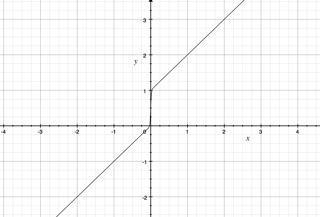There's nothing inherently wrong with this!
Let $I(x_i)$ be an indicator for $x$ being greater than zero. Of course you could run the regression:
$$ y_i = b_0 + b_1 x_i + b_2 I(x_i) + \epsilon_i $$
And this would be a sensible thing to do if your conditional expectation function had a discontinuity of some unknown size at zero. For example:
Sure there's going to be some correlation between $x$ and $I(x)$, but that's part of the reason you run a regression with multiple regressors rather than estimating everything separately. Too correlated though and you do have a problem, but I'd think you're probably ok.
Example: estimating stock market response to earnings surprise
Let $y_{it}$ be the abnormal return of firm $i$ at time $t$. Let $x_{it}$ be the earnings surprise. You would typically run something of the type:
$$ y_{it} = b_0 + b_1 x_{it} + b_2 I(x_{it}) + \epsilon_{it} $$
because there's a sizable penalty for missing your forecast earnings! There's a big non-linearity at zero.
Appendix: Definition of a recession
There are two commonly used data sources for what's a recession:
- (Informal) Two consecutive quarters of GDP decline.
- (Formal) The expert judgement of the NBER dating committee.
GDP growth and a recession indicator aren't collinear. A problem in all of macro though is that you have limited data relative to everything you'd like to estimate. If you have a twenty year sample, you only have TWO recessions! It would be like you have two subjects that got treatment.

